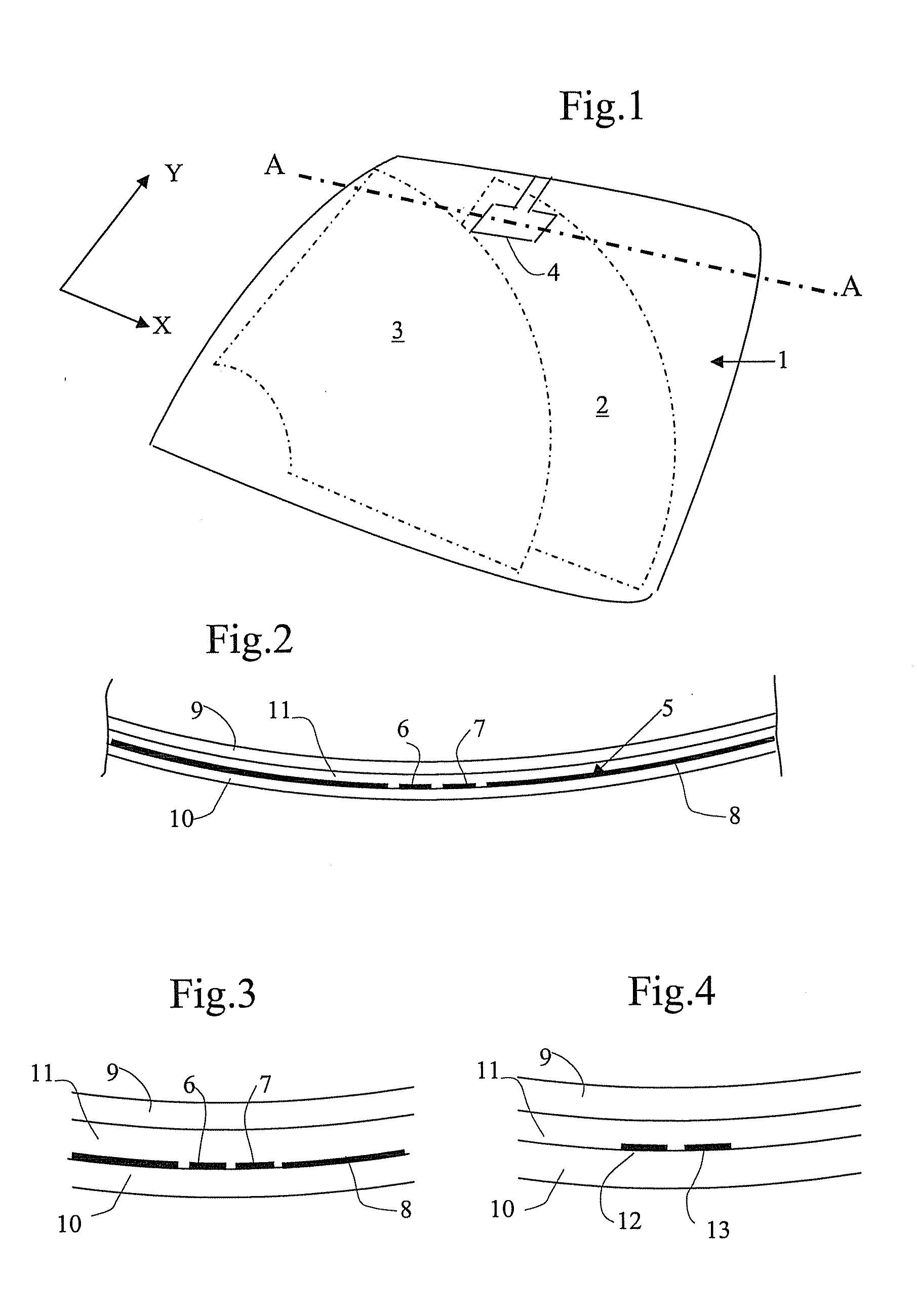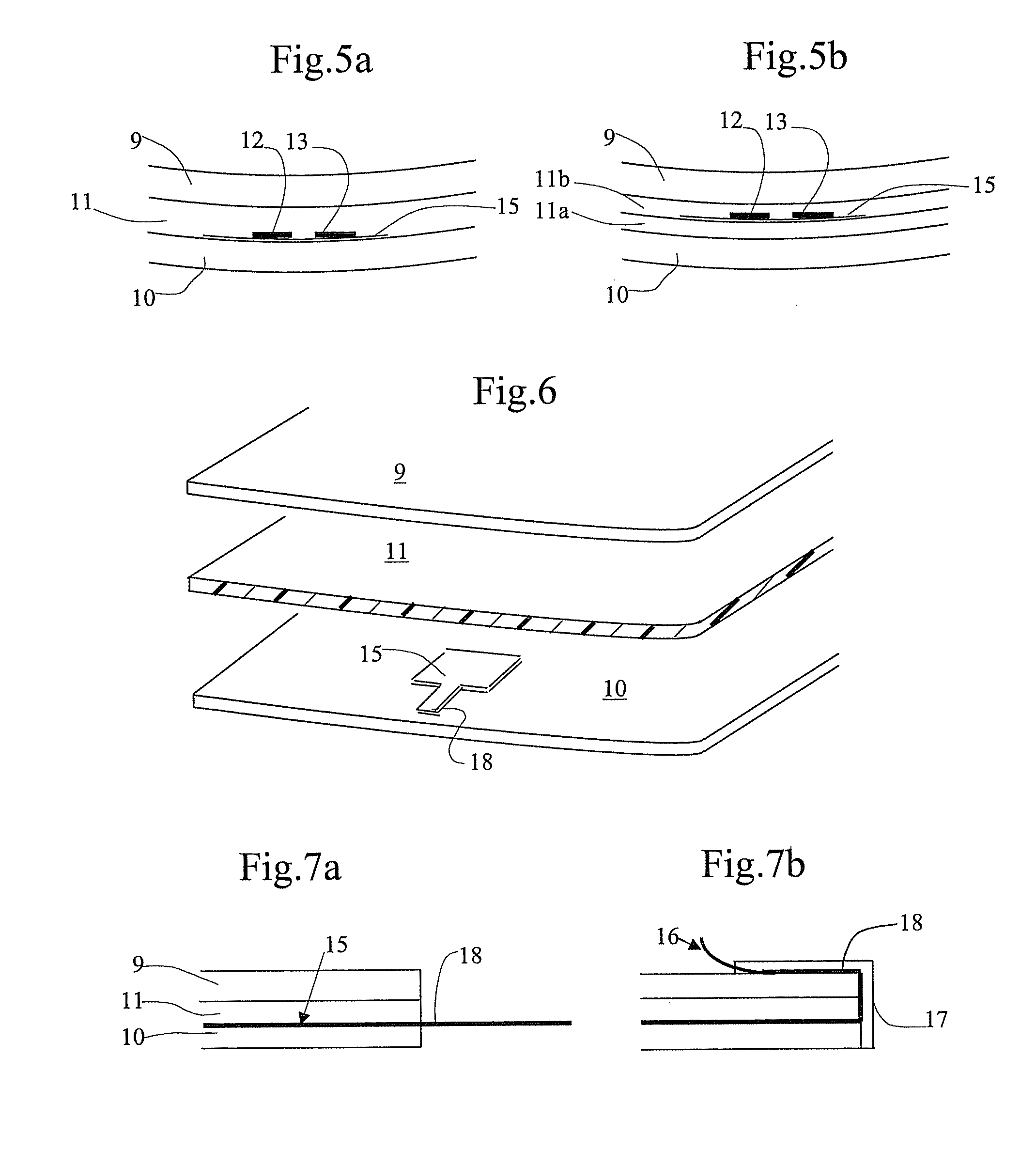Glazing comprising a capacitive rain sensor
a capacitive rain sensor and window technology, applied in the direction of instruments, vehicle maintenance, coatings, etc., can solve the problems of unattractive presence of the sensor on the windscreen, inability to be used in practice, and non-transparent elements on the window, so as to reduce the production cost of these elements
- Summary
- Abstract
- Description
- Claims
- Application Information
AI Technical Summary
Benefits of technology
Problems solved by technology
Method used
Image
Examples
Embodiment Construction
[0062]FIG. 1 shows a typical arrangement of a rain sensor on a motor vehicle windscreen (1). The windscreen has composite curves in the width direction (x direction) and in the height (Y direction), the usual form in current models.
[0063]The rain sensor (4) is of necessity situated on the windscreen in a zone (2, 3) swept by the windscreen wipers. In the figure these zones are shown schematically by broken lines. This arrangement is controlled by the fact that the sensor (4) is designed to trigger the movement of the windscreen wipers in the presence of water on the swept zones. Away from these zones, water may remain after rain has no longer fallen. Consequently, if the sensor was positioned outside these swept zones, the movement of the windscreen wipers could be unnecessarily maintained.
[0064]The sensor (4) in optical detection systems that include non-transparent elements is preferably positioned at a point where it causes no obstruction for the driver. If however, it is still i...
PUM
| Property | Measurement | Unit |
|---|---|---|
| Fraction | aaaaa | aaaaa |
| Fraction | aaaaa | aaaaa |
| Fraction | aaaaa | aaaaa |
Abstract
Description
Claims
Application Information
 Login to View More
Login to View More - R&D
- Intellectual Property
- Life Sciences
- Materials
- Tech Scout
- Unparalleled Data Quality
- Higher Quality Content
- 60% Fewer Hallucinations
Browse by: Latest US Patents, China's latest patents, Technical Efficacy Thesaurus, Application Domain, Technology Topic, Popular Technical Reports.
© 2025 PatSnap. All rights reserved.Legal|Privacy policy|Modern Slavery Act Transparency Statement|Sitemap|About US| Contact US: help@patsnap.com



